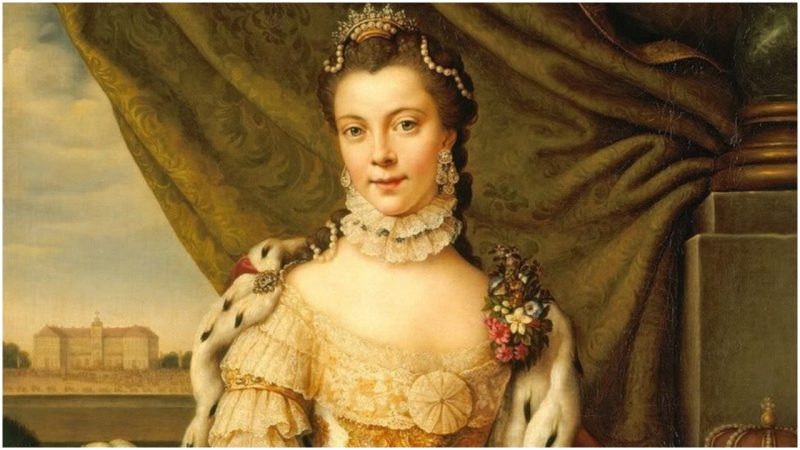When Meghan Markle married Prince Harry in May of this year, much was made of her biracial heritage.
But in the late 18th century Queen Charlotte, wife of King George III (1738-1820), may have been the country’s first multiracial royal. She is the grandmother of Queen Victoria and the great-great-great-great-grandmother of the current Queen Elizabeth II.

Sophia Charlotte, born on May 19, 1744, was the eighth child of Charles Louis Frederick, the Prince of Mirow, Germany, and his wife, Elisabeth Albertina.
Though born in Germany and a princess of Mecklenburg-Strelitz, Charlotte was directly descended from an African branch of the Portuguese Royal House.
Her royal subjects knew nothing about her racial background. It was discovered many years after her death by keen-eyed art historians.
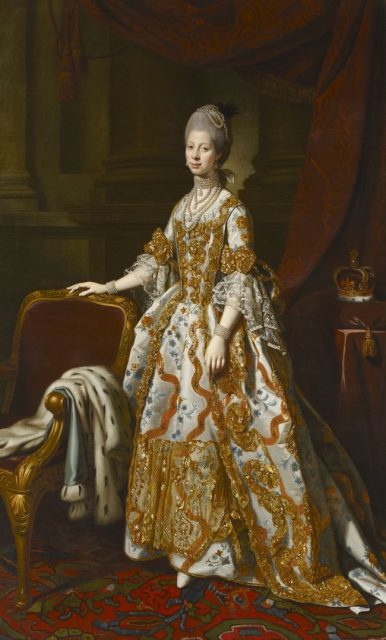
Portrait painters of the royal family played down Charlotte’s African features, much to the Queen’s dismay. Sir Allan Ramsay is thought to have produced the most accurate representations. One in particular, showing the Queen in her sumptuous coronation robe, was sent out into the colonies, a subtle nod to the anti-slavery movement, which was in its beginning stages.
Here, some other facts about this most unusual woman’s life:
She had fifteen children, thirteen of whom survived to adulthood. The couple’s fourth eldest son was Edward, Duke of Kent, who later fathered Queen Victoria. Charlotte was also the mother of two future British monarchs, George IV and William IV.
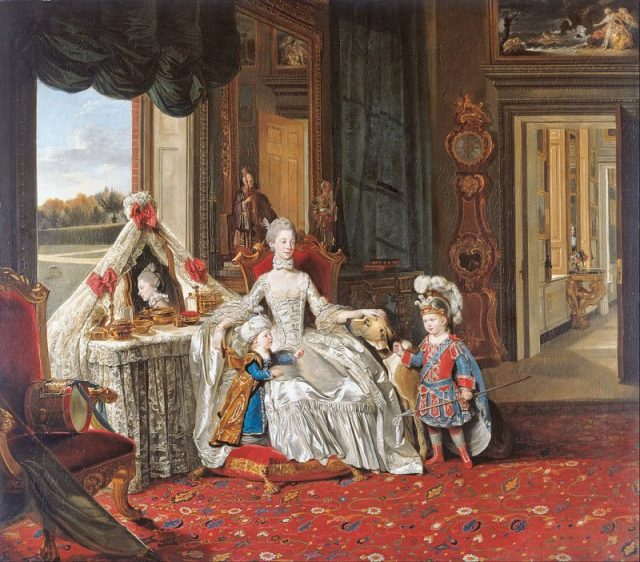
Impressive, to be sure, but being pregnant for a good part of her marriage weighed on the Queen. “I don’t think a prisoner could wish more ardently for his liberty than I wish to be rid of my burden and see the end of my campaign. I would be happy if I knew this was the last time,” she would write in 1780 about her pregnancy with her 14th child, Prince Alfred, according to Janice Hadlow’s The Strangest Family: The Private Lives of George III, Queen Charlotte, and the Hanoverians.
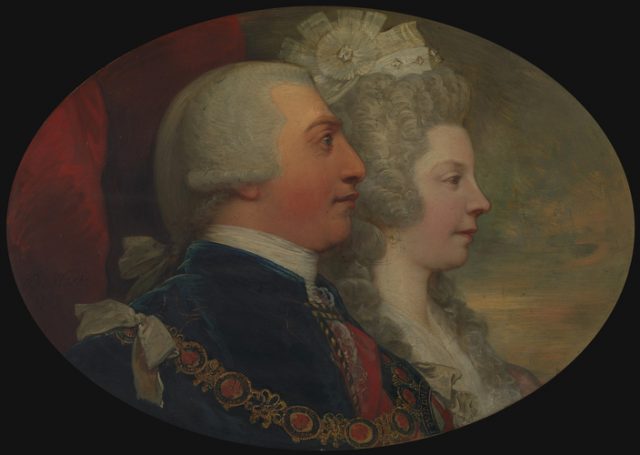
She was the first queen to reside in Buckingham Palace (sort of). St. James Palace was the official residence of the royal couple, but the King purchased a nearby property, Buckingham House (expanded to Buckingham Palace in the 19th century) as a private retreat for his wife.
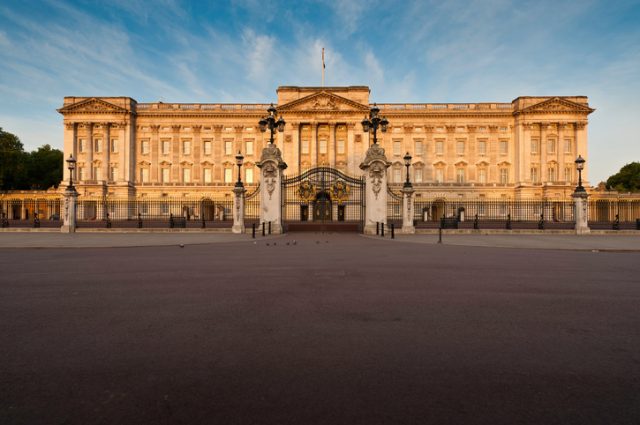
The Queen loved the residence so much, she started spending most of her time there, and it became known as “The Queen’s House.”
She was a close friend of Queen Marie Antoinette. Charlotte was a decade older than the tragic Queen of France, yet they struck up a friendship over a shared love of music and the arts. Though the two never actually me, they corresponded frequently.
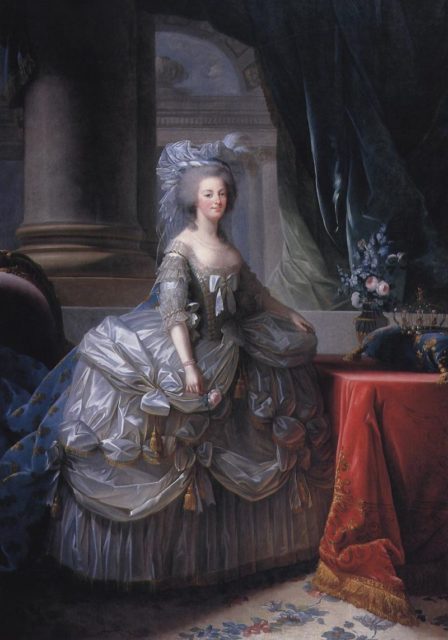
Marie Antoinette confided in Charlotte during the start of the French Revolution, who readied apartments for the French Royal Family. Alas, it never came to be.
She hung out with Mozart. German composer Johann Christian Bach, son of Johann Sebastian Bach, considered her a friend, and she helped him nab the position of state musician, previously held by George Frideric Handel.
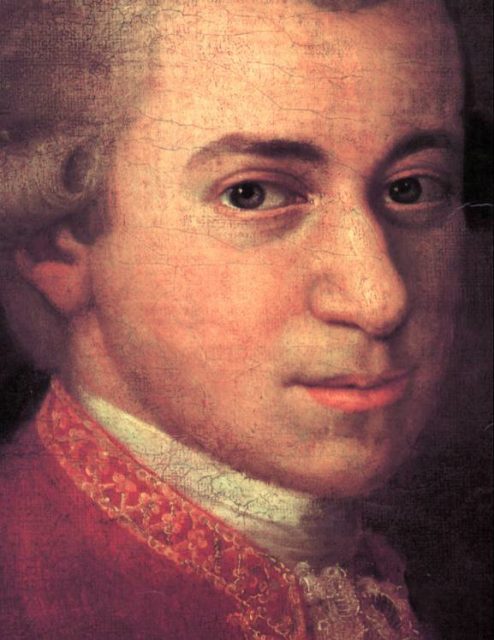
In 1764, an eight-year-old Wolfgang Amadeus Mozart arrived in Great Britain with his family, as part of their grand tour of Europe. Later, Mozart would dedicate his Opus 3 piece to the Queen.
She introduced the Christmas tree to Britain. Charlotte had the first evergreen in her house in 1800, decorating it with sweetmeats, almonds, fruits and toys.

Explorers, such as Captain James Cook, would bring the Queen — something of an amateur botanist — new species of plants, which she displayed and expanded in her gardens. One such find, the South African flower, the Bird of Paradise, was named Strelitzia reginae in her honor.
8 Words you will NEVER hear the Royal Family say
She was a soft touch. The queen founded orphanages and, in 1809, became the patron of London’s General Lying-in Hospital, one of the first maternity hospitals in Great Britain. (“Lying-in” was a slang term for childbirth, back in the day, while “General” meant accepting all cases.)
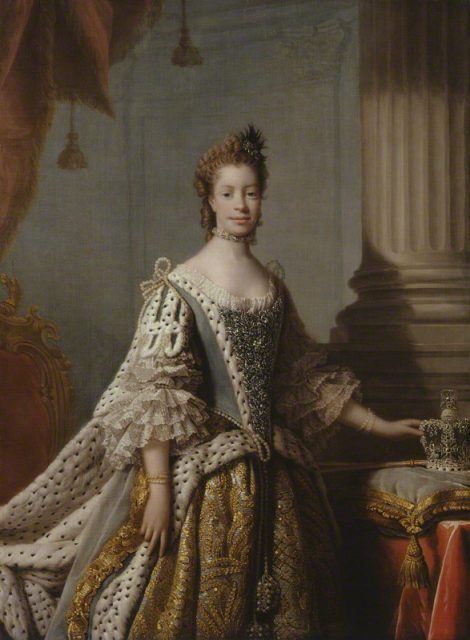
Charlotte would provide funding to prevent the hospital from closing. As a token of their appreciation, it would be re-named the Queen Charlotte’s and Chelsea Hospital, and is now one of the most respected maternity hospitals in London.
She had a dysfunctional family. In 1765, King George became mentally ill. (It’s now believed that he was suffering from porphyria, an inherited disorder stemming from the buildup of certain chemicals in the brain, but at the time the cause of his illness was unknown.)
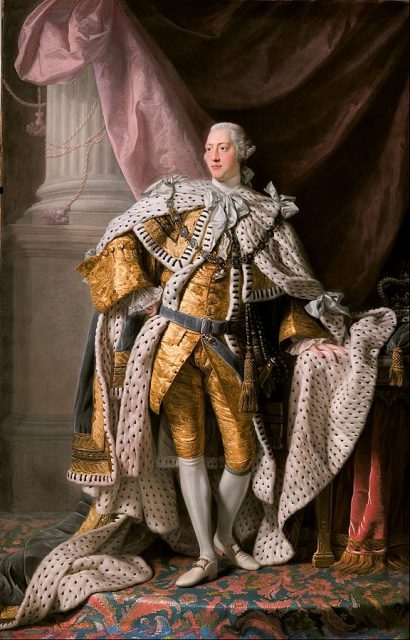
There was a conflict between the Queen and their son, the Prince of Wales, over who should assume the Regency should the King be declared unfit to rule. After George descended into permanent madness in 1811, the Prince was declared Regent.
Charlotte, meanwhile, became her husband’s legal guardian, which placed her under a great deal of stress. She sank into depression and developed quite a temper — both of which led to frequent disagreements with her children.
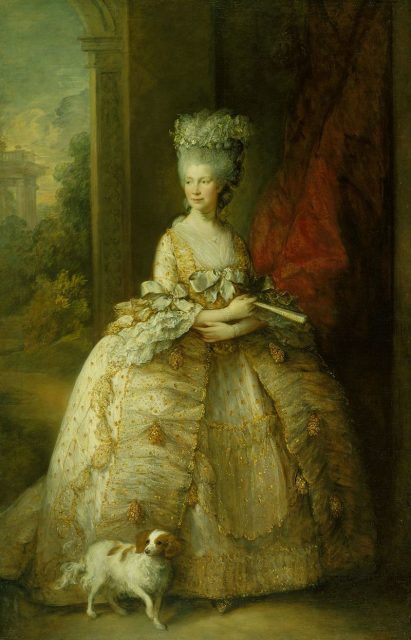
Queen Charlotte and the Prince of Wales would reconcile in 1791, and when she died in 1818, sitting in an armchair at the family’s country retreat, her eldest son was there beside her, holding her hand.
Queen Charlotte was buried at St George’s Chapel, Windsor Castle — appropriately enough, the very place where Prince Harry and his bride Meghan Markle were married. She was the second longest-serving consort in British history, after the present Duke of Edinburgh.

She put the “Charlotte” in Charlotte, North Carolina. In fact, there are places all over the world named in her honor — from Queen Charlotte Sound in New Zealand, to Queen Charlotte Bay in West Falkland, to Charlottesville, Virginia.
Even Rutgers, The State University of New Jersey, was originally chartered as Queens College after Charlotte, though it was renamed in 1825 after Henry Rutgers, a hero in the Revolutionary War.
Barbara Stepko is a New Jersey-based freelance editor and writer who has contributed to AARP magazine and the Wall Street Journal.
